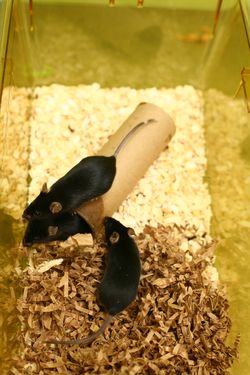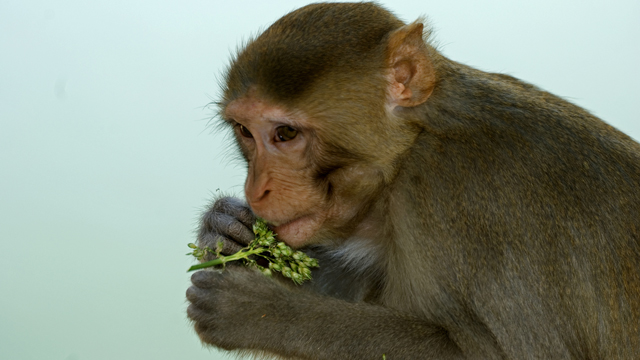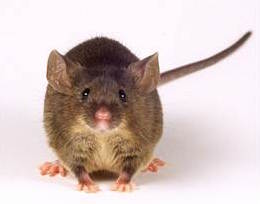Autism
Autism, or autism spectrum disorder, refers to a range of conditions characterized by challenges with social skills, repetitive behaviors, speech and nonverbal communication, as well as by unique strengths and differences. We now know that there is not one autism but many types, caused by different combinations of genetic and environmental influences.
Autism was first defined in 1943, yet researchers were slow to get a better understanding of the disorder. For many years it was incorrectly believed that emotionally distant mothers were the cause. Even in the mid-1990s it was thought to occur in only 1 in 2500 people. Diagnosed cases of autism have risen sharply over the past 20 years, with 1 in 88 children now diagnosed with autism in the US. This has led to a similarly dramatic increase in the amount of research into the condition.
The varied nature of autism spectrum disorders means that it is unlikely there will be a single cause or cure. It is only by building a repertoire of potential causes that researchers can develop treatments for individual cases.
Mice are an important part of this research as they can model certain aspects of the condition. Animal testing allows researchers to study the mice and examine the effects of treatments on the mice's behaviour including sociability, repetitive behaviour and restricted interests. These animal experiments has led to several discoveries of potential causes of autism and allowed work to begin on finding treatments.
Genetics
Chloride ions
Bacteria
Inflammation
Autism research news
References
Genetics
 It is known that over 50% of cases can be attributed to a genetic causeANCHOR. This means that there is great hope for research into different genes that could trigger autism. Genes such as ShankANCHOR, PTEN and SLC6A4 have been linked to autism through studies in mice.
It is known that over 50% of cases can be attributed to a genetic causeANCHOR. This means that there is great hope for research into different genes that could trigger autism. Genes such as ShankANCHOR, PTEN and SLC6A4 have been linked to autism through studies in mice.
Other genes have a direct cause for autistic conditions. For example, Rett syndrome is caused by a mutation in the MeCP2 gene. This disease primarily affects girls, as the gene is on the X chromosome and boys with the mutation often die shortly after birth as they do not have a second copy of the gene like girls. The syndrome can be replicated in genetically modified mice, who suffer from similar symptoms to their human counterparts, such as shortened lifespan, breathing difficulties and behavioural dysfunctionANCHOR. Through the use of this mouse model, several treatments are currently in development for reducing the impact of these symptomsANCHOR ANCHOR ANCHOR ANCHOR ANCHOR ANCHOR ANCHOR ANCHOR.
Chloride ions
A study of two rodent models of autism in 2013 suggested that higher levels of chloride ions in the brain could be a factor in autismANCHOR. Chloride ions are used by nerves to pass signals to each other. The level of these ions in neurons normally drops after birth, which is triggered by a hormone called oxytocin. This calms the neurons and appears to help babies deal with the stress of birth. In the rodent models of autism, these chloride levels did not fall and EEG tests showed that brain activity was not under control.
The mice and rats were then given bumetanide, a common drug for high blood pressure that blocks chloride channels in neurons by boosting the effect of the neurotransmitter GABA. This was able to restore chloride levels and brain activity to normal and there were improvements in social behaviours. These aniaml experiments preceded a clinical trial of bumetanide in children with severe autism has shown improvement to their social interactions and it is hoped that further research can build on thisANCHOR.
Bacteria
It also appears that the bacteria in the body can have an effect on the body’s chemistryANCHOR. Mice raised with completely no exposure to bacteria have altered brain chemistry and show autistic traits. This could be linked to changes in the amount of GABA and how the brain responds to it. The bacterium Lactobacillus rhamnosus, which is used in dairy products, produces GABA and alters production of GABA receptors in mice, which results in decreased anxiety15ANCHOR. For another mouse model of autism, the bacterium Bacteroides fragilis improves the behavioural traits and gastro-intestinal problems in young miceANCHOR.
Inflammation
Another factor linked to autism is inflammation. Although it is a natural part of the body’s protection, too much can be a bad thing. Experiments that have aimed to reduce inflammation in people with autism have shown success. This is despite their rather unusual methods including taking hot baths and swallowing thousands of whipworm eggs. These have both stemmed from anecdotal evidence but are now heading towards clinical trials.
A more severe approach is a bone marrow transplant. Research has suggested that infection in pregnant mothers can lead to an imbalance in the offspring’s immune system, leading to inflammationANCHOR,ANCHOR. Bone marrow transplants in these offspring in mice have been shown to alleviate some of the autism-like behaviourANCHOR. A procedure like this for autism patients would be too dangerous and have serious side-effects, but it is hoped that this research will lead to a treatment that can mimic the beneficial effects.
Autism research news
26/06/18 Autism traits could be 'edited' out genetic trial suggests

02/05/18 Autism test and treatment on horizon as scientists find hormone deficiency link
A test and possible treatment for autism could be on the horizon after scientists discovered that people and primates who are less social are deficient in a particular hormone. In tests on rhesus monkeys, they found that less social animals had levels of the hormone which were almost one third lower than their more gregarious peers. And a similar deficiency was found in 14 autistic boys. Although the results are preliminary, the researchers believe their findings suggest that AVP may not only provide a test for autism, but also be a target for developing drugs to alleviate social impairment.

23/03/18 How Much Can a Mouse Truly Reveal About Autism?
The ideal “autism mouse,” researchers thought at the time, should show all the same traits that characterize autism in people: language and social problems, and restricted and repetitive behaviors. Some mutant mice make fewer ultrasonic vocalizations than controls do, which many behaviorists took to be an analog of language problems. Other models groom, jump, or bury marbles to an excessive degree—actions the researchers interpreted as repetitive behaviors reminiscent of autism. But researchers were most intent on sniffing out social deficits, a hallmark feature of autism. If they could pin down a murine model of this trait, the thinking went, perhaps they could design drugs to address it—or could at least better understand the brain pathways involved.
https://www.theatlantic.com/science/archive/2018/03/the-limits-of-studying-autism-in-mice/556109/
References
- Ronald A et al (2006) J Am Acad Child Add Psy 45,691-699
- Peça J et al (2011) Shank3 mutant mice display autistic-like behaviours and striatal dysfunction Nature 472, 437–442 doi:10.1038/nature09965
- Katz DM et al (2012) Preclinical research in Rett syndrome: setting the foundation for translational success Dis Model Mech. 5(6):733–745 doi: 10.1242/dmm.011007
- Abdala AP et al (2010) Correction of respiratory disorders in a mouse model of Rett syndrome Proc Natl Acad Sci USA 107(42):18208-13
- Deogracias R et al (2012) Fingolimod, a sphingosine-1 phosphate receptor modulator, increases BDNF levels and improves symptoms of a mouse model of Rett syndrome. Proc Natl Acad Sci USA. 109(35):14230-5
- Guy J et al (2007) Reversal of neurological defects in a mouse model of Rett syndrome Science 23;315(5815):1143-7
- Kron M et al (2012) Brain activity mapping in Mecp2 mutant mice reveals functional deficits in forebrain circuits, including key nodes in the default mode network, that are reversed with ketamine treatment. J Neurosci 32(40):13860-72
- Nag N, Berger-Sweeney JE (2007) Postnatal dietary choline supplementation alters behavior in a mouse model of Rett syndrome. Neurobiol Dis. 26(2):473-80
- Roux JC et al (2007) Treatment with desipramine improves breathing and survival in a mouse model for Rett syndrome. Eur J Neurosci. 25(7):1915-22
- Schmid DA et al (2012) A TrkB small molecule partial agonist rescues TrkB phosphorylation deficits and improves respiratory function in a mouse model of Rett syndrome. J Neurosci. 32(5):1803-10
- Tropea D et al (2009) Partial reversal of Rett Syndrome-like symptoms in MeCP2 mutant mice. Proc Natl Acad Sci USA. 106(6):2029-34
- Tyzio R et al (2014) Oxytocin-Mediated GABA Inhibition During Delivery Attenuates Autism Pathogenesis in Rodent Offspring Science 343(6171):675-679 doi:10.1126/science.1247190
- http://news.sciencemag.org/brain-behavior/2012/12/diuretic-drug-offers-latest-hope-autism-treatment
- http://www.newscientist.com/article/mg22129530.400-psychobiotics-how-gut-bacteria-mess-with-your-mind.html
- Bravo JA et al (2011) Ingestion of Lactobacillus strain regulates emotional behavior and central GABA receptor expression in a mouse via the vagus nerve. Proc Natl Acad Sci USA 108(38):16050-5 doi:10.1073/pnas.1102999108
- Hsiao EY et al (2013) Microbiota modulate behavioral and physiological abnormalities associated with neurodevelopmental disorders Cell 19;155(7):1451-63 doi:10.1016/j.cell.2013.11.024
- Mostafa GA et al (2010) Frequency of CD4+CD25high Regulatory T Cells in the Peripheral Blood of Egyptian Children With Autism J. Child Neurol. 25, 328-335 doi:10.1177/0883073809339393
- Atladóttir HO et al (2010) Maternal Infection Requiring Hospitalization During Pregnancy and Autism Spectrum Disorders J. Autism Dev. Disord. 40, 1423-1430 doi:10.1007/s10803-010-1006-y
- Hsiao EY et al (2012) Modeling an autism risk factor in mice leads to permanent immune dysregulation Proc. Natl. Acad. Sci. USA 109, 12776-81 doi:10.1073/pnas.1202556109
Last edited: 9 March 2021 09:37
